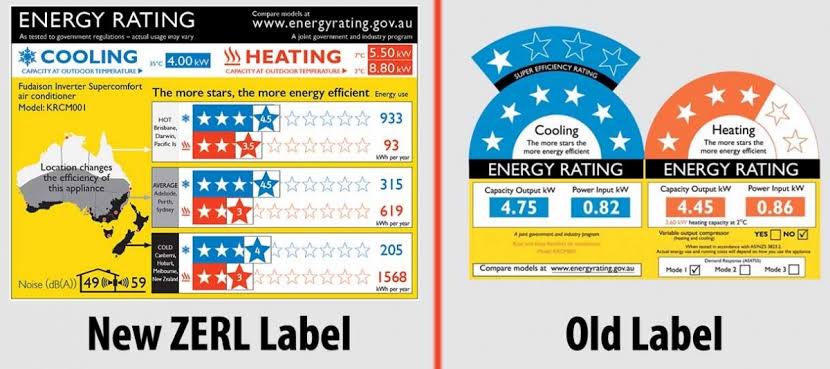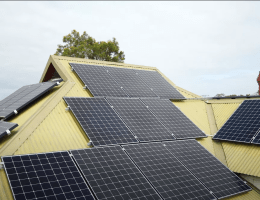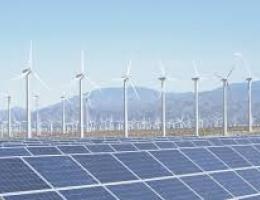
The energy star rating system for air conditioners is a bit of a mystery and over time has been upgraded (with the latest determination happening in 2019) so that what was once a 5 star appliance may now only be a 3 star appliance, the look of the energy star label has also changed.
Air conditioners
The first thing to note is that the efficiency of your air conditioner is 'location dependent' and so the rating system is separated into three climate zones: hot (places like Brisbane or Darwin), average (places like Perth or Adelaide) and cold (Melbourne, Hobart and NZ) the rating sticker will look something like the picture below.
This factsheet from the energy star rating website will give you details of all the information on the star rating label (some labels have quite a bit more detail).
Ok so how exactly are the star ratings related to the efficiency of an appliance, well the following table from the thrilling document "Greenhouse and Energy Minimum Standards (Air Conditioners up to 65kW) Determination 2019" gives the conversion between the energy star rating and total cooling season performance factor (TCSPF) and heating season performance factor (HSPF) (more on how the TSSPF and HSPF are calculated shortly).
Total cooling season performance factor (TCSPF) and heating season performance factor (HSPF) are similar to energy efficiency rating or EER (a measure of how energy efficient your AC is in cooling mode) and coefficient of performance or COP (a measure of how energy efficient your AC is in heating mode) respectively.
They are both calculated in a similar way, that is, dividing the cumulative heat/cooling output in kWh (thermal) by the cumulative electrical energy input in kWh over the relevant season.
The reason for using TCSPF and HSPF instead of COP and EER is that the efficiency (and thus COP and EER) of heat pumps varies according to the ambient air temperature which fluctuates day to day over the seasons. The exact details of how the TCSPF and HSPF are worked out is not appropriate for this article however, for those interested, the formal method is available in AS/NZS 3823.4.1:2014 and involves using the accepted calculation method from the standard in conjunction with daily temperature data for a given climate zone to work out the cumulative energies for the heating and electrical energy terms in the equation above.
So as you can see the calculation for an AC star rating is somewhat complex now what about heat pumps.
Well, currently, there is no official government energy star rating system for heat pump hot water units however a labelling system is being investigated, which give interested parties a chance to help develop one. It will probably be similar to the scheme for AC units but of course without the cooling component.
So there you have it, most of the mystery of how the energy star label works for air-conditioners has been decoded.






